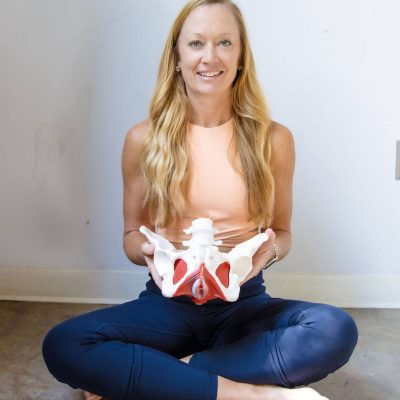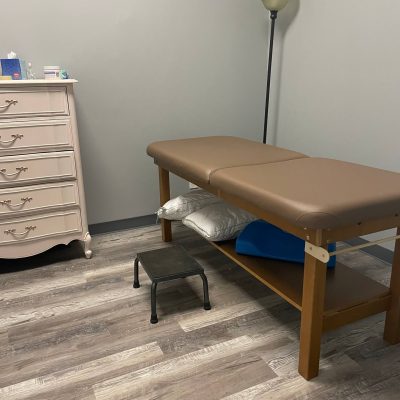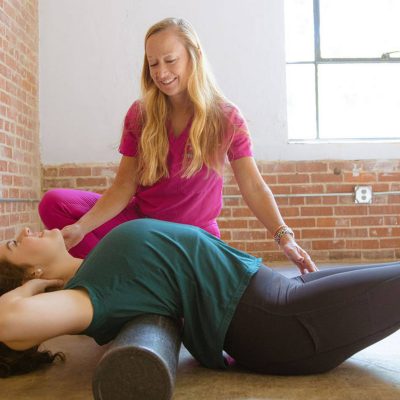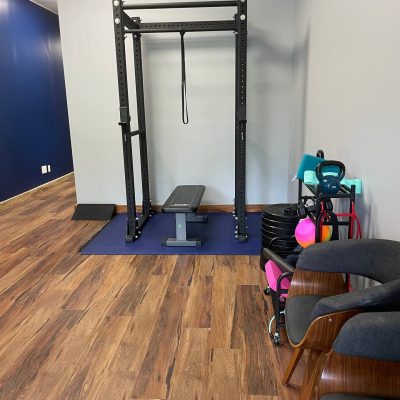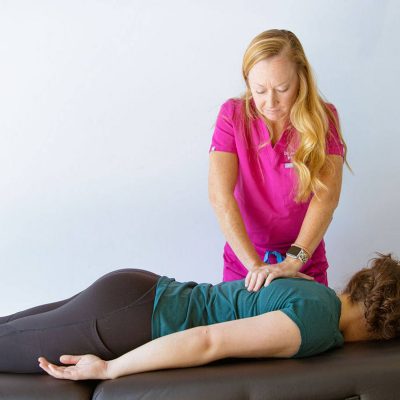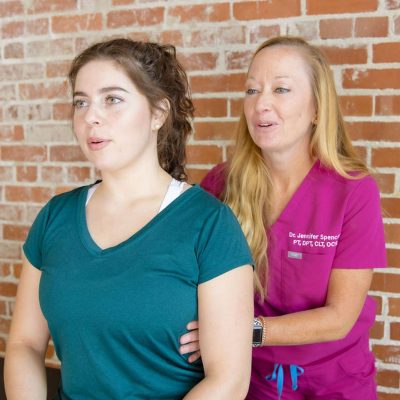Your hip rotators, which move your hip in and out, have direct connections to the pelvic floor. What happens at the hip can affect what happens at the pelvic floor and vice versa. Hip strength and mobility is key to a healthy pelvic floor! The position of your hips can also influence what position your pelvic floor is in. For example, a hip in external rotation (knees wide) puts the pelvic floor stretch but helps it descend. A hip in internal rotation (ankles wide) makes the pelvic floor engage and lift. Oftentimes hip pain and
pelvic floor dysfunction exist together. For example, you may be experiencing hip pain and also have urinary leakage. You might have hip pain and also suffer from pain with sex.
The Obturator Internus is one of six external rotators of your hip. The role of the obturator internus (OI) muscle is to assist in rotation and stabilization of the hip on the pelvis. This provides stability while moving as well as a site of attachment for the pelvic floor muscles. . In addition to the OI’s role in mobility, the muscle is a pathway for the pudendal nerve and blood vessels as it works its way through the pelvis.
If the OI becomes strained, tight or weak you may experience pain in the outside of the hip, near the sitting bone or deep inside the pelvis in a place that may seem hard to reach. It may refer pain to your lower abdomen or groin.
Moreso, due to the close relationship of the OI with the pelvic floor muscles you may also experience painful sitting, urinary urgency and frequency, urinary leakage, and/or sexual dysfunction. OI-related symptoms are not limited to one gender over another, or sedentary individuals versus athletes.
The pudendal nerve and the OI also share space in the pelvic cavity. The PN branches off in three directions as it leaves the pelvic cavity to innervate the rectum, vaginal/perineal region and the genitals, and one of the pathways it travels through is in the region of the OI muscle and fascia. Changes in hip mechanics, muscle tissue, strength or coordination may contribute to pelvic symptoms if this affects the route of the pudendal nerve (PN) through the obturator muscle and fascia. If a nerve is compressed, stretched, or irritated you may feel different sensations in the pelvis that are typical of nerve involvement in other areas of the body. Normal symptoms in the pelvis of PN compromise may include numbness, pain, burning, aching, or itching in the rectum, vaginal or perineal regions, and/
or in the penis or clitorial region.
Restoring mobility and function of the OI, pelvic floor, and other hip muscles can help to resolve your literal pain in the buttocks and get you back to running, biking, traveling, sexual activities and all of the other fun things you have stopped with due to pain or other symptoms.
If you have these symptoms or have not succeeded with traditional orthopedic physical therapy for your hip, contact us to learn more about how pelvic floor physical therapy can restore your muscle function and get you back to all of your activities!
Check this video out to see if you can SMOOTHLY move your hips in and out of rotation equally. If not, contact us for a hip and pelvic floor assessment!
Magic City Physical Therapy
Hoover, AL
Instagram @magiccitypt
Phone (205)202-0874
Fax (205)573-3709

